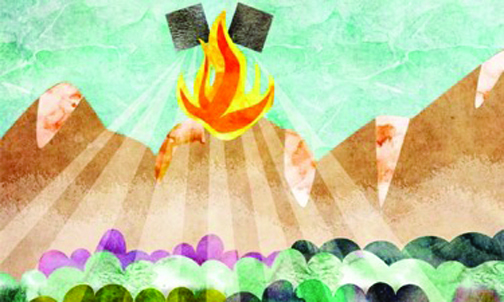What Is Yom Kippur?
Yom Kippur is the holiest day of the year, when we are closest to G‑d and to the essence of our souls. Yom Kippur means “Day of Atonement,” as the verse states, “For on this day He will forgive you, to purify you, that you be cleansed from all your sins before G‑d.”
It arrives on the 10th day of Tishrei (in 2022, from several minutes before sunset on Tuesday, Oct. 4 until after nightfall on Wednesday, Oct. 5), coming on the heels of Rosh Hashanah (the Jewish New Year, which is on the first and second days of Tishrei).
For nearly 26 hours we “afflict our souls:” We abstain from food and drink, do not wash or apply lotions or creams, do not wear leather footwear and abstain from marital relations. Instead, we spend the day in synagogue, praying for forgiveness.
History of Yom Kippur
Just months after the people of Israel left Egypt in the year 2448 from creation (1313 BCE), they sinned by worshipping a golden calf. Moses ascended Mount Sinai and prayed to G‑d to forgive them. After two 40-day stints on the mountain, full Divine favor was obtained. The day Moses came down the mountain (the 10th of Tishrei) was to be known forevermore as the Day of Atonement – Yom Kippur.
That year, the people built the tabernacle, a portable home for G‑d. The tabernacle was a center for prayers and sacrificial offerings. The service in the tabernacle climaxed on Yom Kippur, when the High Priest would perform a specially prescribed service. Highlights of this service included offering incense in the Holy of Holies (where the ark was housed) and the lottery with two goats – one of which was brought as a sacrifice, the other being sent out to the wilderness (Azazel).
While the High Priest generally wore ornate golden clothing, on Yom Kippur he would immerse in a mikvah and don plain white garments to perform this service. This practice continued for hundreds of years, throughout the time of the first temple in Jerusalem, which was built by Solomon, and the second temple, which was built by Ezra. Jews from all over would gather in the temple to experience the sacred sight of the High Priest performing his service, obtaining forgiveness for all of Israel.
When the second temple was destroyed in the year 3830 from creation (70 CE), the Yom Kippur service continued. Instead of a High Priest bringing the sacrifices in Jerusalem, every single Jew performs the Yom Kippur service in the temple of his or her heart.
The Chabad of the Crescenta Valley, located at 929 Descanso Drive, will be holding services in La Cañada. The community is invited to join Rabbi Mendy and Mushka Grossbaum for High Holiday service, brimming with melodies and song, together with meaningful and heartfelt prayer. For more information or to RSVP visit cvchabad.org/hh2022.

